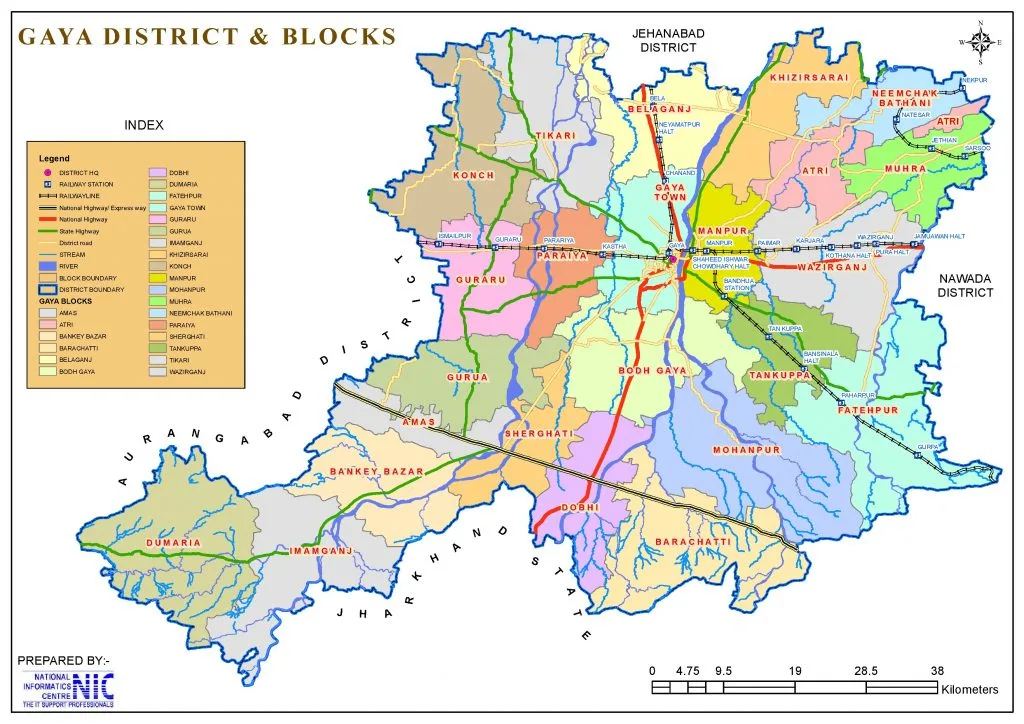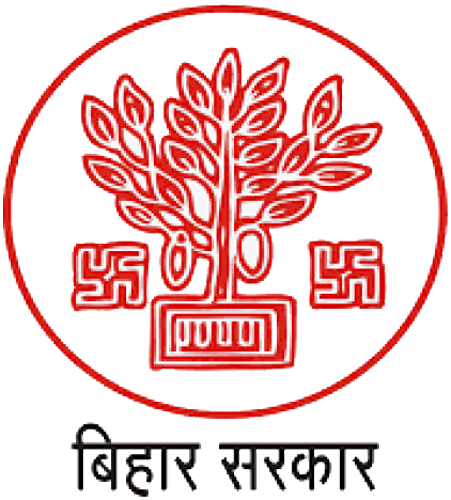INTRODUCTION
Gaya derives its name from the mythological demon Gayasur (which literally means Gaya the holy demon), demon (asur, a Sanskrit word) and Gaya. Over its history dating millennia, the word asur got deleted and the name Gaya remained in currency. Lord Vishnu killed Gayasur, the holy demon by using the pressure of his foot over him. This incident transformed Gayasur into the series of rocky hills that make up the landscape of the Gaya city. Gaya was so holy that he had the power to absolve the sins of those who touched him or looked at him; after his death many people have flocked to Gaya to perform shraddha sacrifices on his body to absolve the sins of their ancestors. Gods and goddesses had promised to live on Gayasur’s body after he died, and the hilltop protuberances of Gaya are surmounted by temples to various gods and goddesses. These hilltop temples at Rama Shila, Mangla Gauri, Shringa Sthan and Brahmayoni are part of the pilgrimage circuit, and grand staircases have been built up to most of them.

QUICK LINKS
- Annual Report
- Governing Board
- Atma Management Committee
- Kishan Salahkar Samiti
- Monthly Progress Report
- Special Project
- SREP
- FPO's
- SHG's & FIG's
NEWS & UPDATES
Holy Sites in Gaya
Sacred places in Gaya correspond to physical features, most of which occur naturally. Ghats and temples line the banks of the sacred Falgu River. Trees such as pipal trees and Akshayavat, the undying banyan, are especially sacred. The Mangla Gauri shrine is marked by two rounded stones that symbolize the breasts of the mythological Sati, the first wife of Lord Shiva. The most popular temple today is Vishnupad Temple, a place along the Falgu River, marked by a footprint of Vishnu incised into a block of basalt, that marks the act of Lord Vishnu subduing Gayasur by placing his foot on Gayasur’s chest. The present day temple was rebuilt by Devi Ahilya Bai Holkar, the ruler of Indore, in the 18th century. Buddhist tradition regards the footstep in the Vishnupad Temple as a footstep of Buddha (who is regarded as an avatar of Vishnu by Hindus). Gaya is significant to Hindus from the point of view of salvation to the souls of ancestors (a ritual called pindadanam). According to Ramayana, when Lord Rama came to Gaya along with Sita for pitrupaksha (or to perform pindadanam), Sita cursed the Falgu River following some disobedience on the part of the river. The mythology states that on account of this curse, Falgu River lost its water, and the river is simply a vast stretch of sand dunes. For Buddhists, Gaya is an important pilgrimage place because it was at Brahmayoni hill that Buddha preached the Fire Sermon (Adittapariyaya Sutta) to one thousand former fire-worshipping ascetics, who all became enlightened while listening to this discourse. At that time, the hill was called Gayasisa.
Ancient history
Documented history of Gaya dates back to the birth of Gautam Buddha. About 15 km from Gaya town is Bodh Gaya, the place where Gautam Buddha got enlightenment. Since then the places around Gaya (Rajgir, Nalanda, Vaishali, Patliputra) had been the citadel of knowledge for the ancient world. These centers of knowledge further flourished under the rule of dynasties like the Mauryans who ruled from Patliputra (modern Patna) and covered the area beyond the boundaries of the Indian subcontinent. During this period, Gaya was a part of the Magadh region.
Transportation
Gaya is well connected to the rest of India and the world by roadways, railways and airways.
Roadways
The Grand Trunk Road (NH-2, which is undergoing a revival under The Golden Quadrilateral project) is about 30 km. from Gaya city. Thus, Gaya is well connected to Kolkata, Varanasi, Allahabad, Kanpur, Delhi, Amritsar, and to the Pakistani cities of Lahore and Peshawar. The highway connecting Gaya to Patna is now in a good condition,also the railway services between the two stations is up to the mark.
Railways
Gaya is the second most important station in Bihar after Patna. It is a junction and is connected to the three of the four metropolis New Delhi, Kolkata and Mumbai through Important Broad Gauge Routes (direct trains), including the Grand Chord line. There is a direct non-stop train, the Mahabodhi Express from New Delhi to Gaya daily. It takes around 16 hours to reach Gaya from New Delhi through train. There are direct trains from Gaya to other important stations in India like Ranchi, Varanasi, Lucknow, Kanpur, Allahabad, Agra, Mathura, Jabalpur, Bhopal, Indore, Nagpur, Puri, etc. There are also two smaller train lines from Gaya, one to Patna and the other to Kiul.
Airways
Gaya has the only international airport in Bihar and Jharkhand taken together. It is an international airport connected to Colombo, Sri Lanka through two airline operators; Bangkok, Thailand; Singapore, and Paro, Bhutan. It is said to be being developed as a stand-by to the Calcutta airport. Gaya Airport is served by Indian Airlines for domestic flights and Sri Lankan Airlines, Mihin Lanka, Druk Air and Indian Airlines for international flights. Thai Airways is planning a nonstop flight to Gaya from Bangkok. The distance of gaya airport to National Heritage sites “Bodh-Gaya” about 5 Kilometers.

